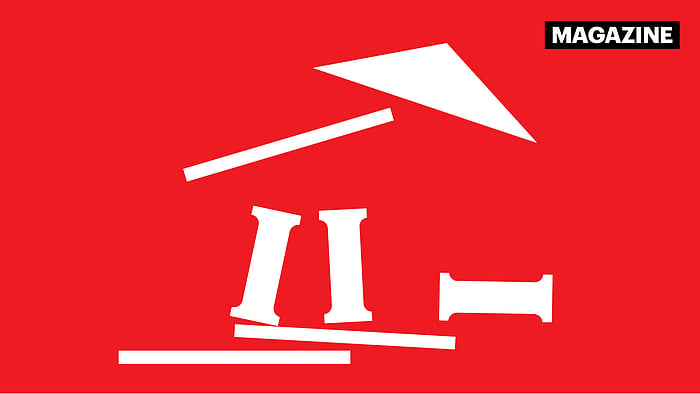While Huxley consumed 400 mg of mescaline under the careful supervision of British psychiatrist Humphry Osmond — who ensured he did not suffer any adverse effects — investors, when driven purely by perception and narratives, have no such safety net to shield them from unforeseen risks. And that’s precisely what has unfolded in the case of IndusInd Bank, India’s fifth-largest private-sector lender.
For years, IndusInd has been a familiar name in the private banking space, a mid-sized player straddling retail and wholesale banking. But now, it finds itself at the centre of a controversy that has rattled investor confidence and invited regulatory scrutiny. What began as an “accounting discrepancy” in its forex derivative books has snowballed into a major debate on transparency, risk management, and governance within the larger banking ecosystem.
It all started with an “open-ended hedge accounting” practice that the bank followed, where internal swaps were fixed at swap cost, while external swaps were marked-to-market. This led to a mismatch that went unnoticed — until it didn’t. The result? A ₹1,600-crore loss, equivalent to over 2% of its net worth, that will now be reflected in the bank’s P&L in the upcoming quarter, even as its market cap has come off ₹17,000 crore in five sessions.
While the bank’s management did not respond to Fortune India’s queries, experts have expressed surprise over the development. Abhijit Sen, former CFO of Citibank India, in a LinkedIn post mentions that he found it astounding that this discrepancy slipped past multiple layers of control.
Prakhar Agarwal, analyst at Elara Securities, mentions that the episode raises several red flags beyond the ₹1,600-crore loss. “This event will shake investor confidence on franchise value. While valuation looks low, book value sanctity is under question,” Agarwal says in his report. He raises pertinent points: 1) Why was this not highlighted earlier; 2) How is such a lapse possible despite concurrent audits; 3) Why did the auditors not share any qualifications; 4) Are there any additional challenges; and 5) How did this issue go undetected for more than five years?
In fact, former banker and treasury expert Manoj Rane, who was part of IndusInd Bank’s founding team, too, pointed out a critical flaw in the bank’s structure in a LinkedIn post: “The asset-liability management and trading business at the bank were not separated and reported to the same person. If the hedges were appropriate, there was no reason for this loss to surface.”
The fallout of this fiasco is not just financial but reputational. Investors are wary, and history suggests that once confidence in a bank is shaken, it takes time to rebuild. Manoj Shenoy, co-founder & CEO of wealth advisory and asset management firm BugleRock Capital, tells Fortune India: “Whenever there’s an issue of integrity or trust, the stock gets a lower valuation for a while. Maybe it’ll come back in two years, but for now, people will be watching.”
Adding to the uncertainty, the Reserve Bank of India approved Sumant Kathpalia’s reappointment as MD & CEO for only one year instead of three. The shortened tenure signals a lack of full confidence.
A key question remains: Will the RBI allow the promoters to increase their stake to stabilise the bank? Shenoy thinks it’s likely. “The axe will fall on the CFO and CEO, but the promoters will be allowed to increase their stake as they are bringing in fresh capital,” he says.
The bank remains adequately capitalised, and depositors face no immediate risk. But the book was inflated, and now the earnings are undergoing a correction. This explains the stock price decline — down nearly 20% in the past few weeks. While the stock is now trading at a steep discount — 0.9x book value, and a 7x PE ratio, perception is everything. Right now, the market isn’t convinced that the worst is over. But IndusInd’s slide has coincided with a rise in Kotak Mahindra Bank’s share price, which is up over 11% YTD and 3% in five days. With financials enjoying a high weightage in the index, investors need exposure to the sector. They now have safer options.
If perception shapes reality, then in the world of investing, failing to see beyond what is known can be the greatest risk of all.
Source:https://www.fortuneindia.com/long-reads/indusind-banks-derivative-debacle-when-accounting-leads-to-a-credibility-crisis/121660

